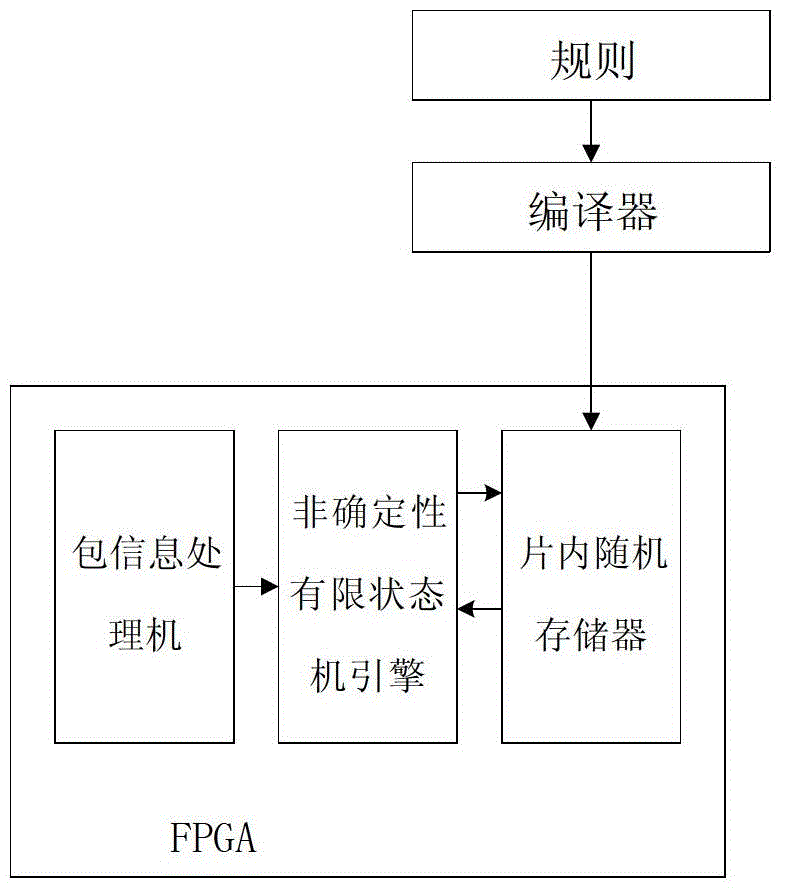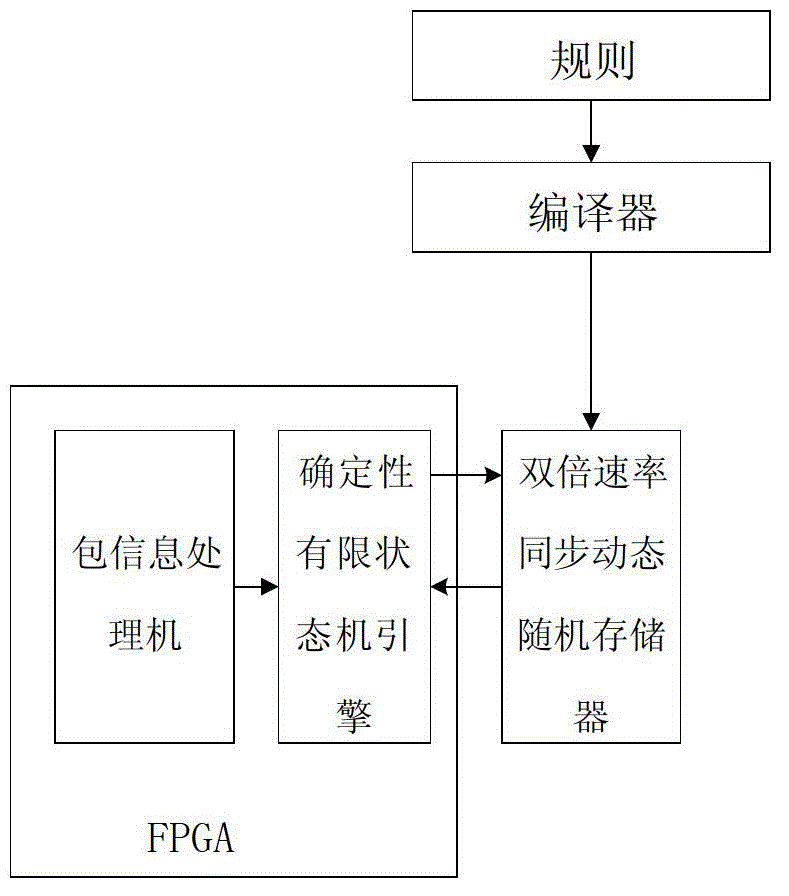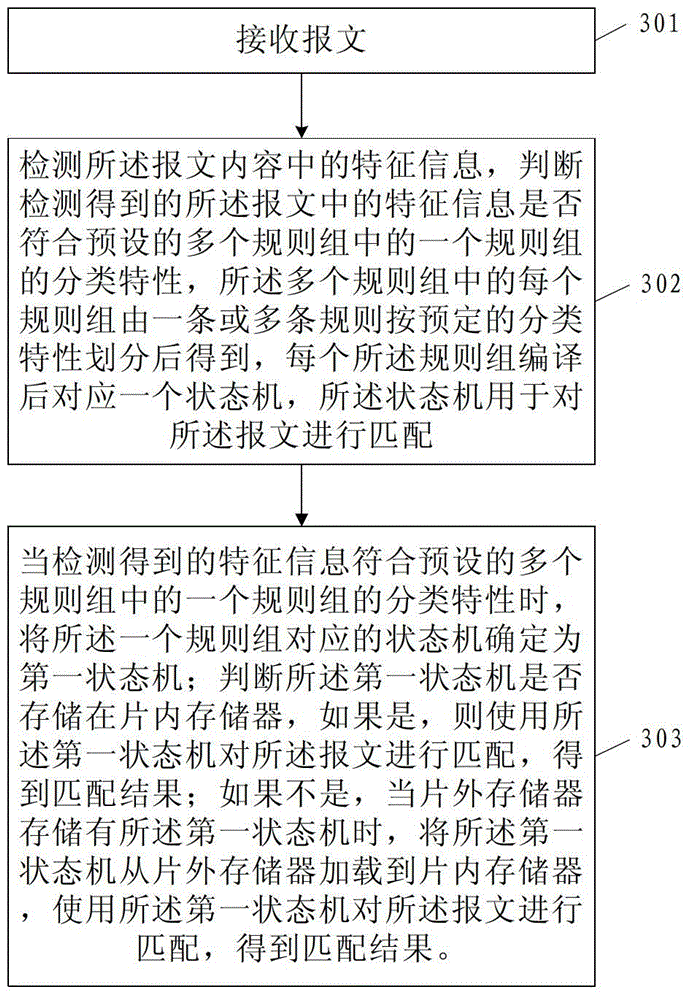Method and device for rule matching
A matching method and rule technology, applied in the network field, can solve problems such as performance needs to be improved, and achieve the effect of avoiding rule explosion and improving product performance
- Summary
- Abstract
- Description
- Claims
- Application Information
AI Technical Summary
Problems solved by technology
Method used
Image
Examples
Embodiment 1
[0035] The embodiment of the present invention provides a rule matching method, such as image 3 As shown, the method includes the following steps:
[0036] 301. Receive a message;
[0037] 302. Detect the feature information in the message content, and judge whether the detected feature information in the message conforms to the classification characteristics of one of the preset rule groups, and among the multiple rule groups Each rule group is obtained by dividing one or more rules according to predetermined classification characteristics, and each rule group is compiled to correspond to a state machine, and the state machine is used to match the message, wherein the match Frequently used state machines are stored in the on-chip memory with faster read and write speeds, and other state machines are stored in off-chip memories with slower read and write speeds;
[0038] The on-chip memory here refers to the memory solidified inside the processing chip (such as FPGA), which...
Embodiment 2
[0046] In Embodiment 1, each rule group in the plurality of rule groups is obtained by dividing one or more rules according to predetermined classification characteristics. This division can use multiple rules, and this embodiment will specifically describe one of the rules The division method and the corresponding detection method based on this division method will be introduced in detail. It should be noted that this division method and the corresponding detection method based on this division method are not necessarily limited to the application scenario of embodiment 1. It can be applied in other scenarios where division and detection are required, that is, this embodiment can exist independently and solve corresponding technical problems, and does not necessarily depend on embodiment 1.
[0047] like Figure 4 As shown, in this embodiment, one or more rules are divided into multiple rule groups according to predetermined classification characteristics, including the follo...
Embodiment 3
[0073] This embodiment will specifically introduce another rule-specific division method and the corresponding detection method based on this division method. Similar to Embodiment 2, this division method and the corresponding detection method based on this division method are not It must be limited to the application scenario where Embodiment 1 is located, and can also be applied to other scenarios that require division and detection, that is, this embodiment can exist alone and solve corresponding technical problems, and does not necessarily depend on Embodiment 1 and Example 2.
[0074] see Figure 6 , the specific grouping method and some other preprocessing steps performed based on the grouping method are as follows:
[0075] 601. Divide one or more rules starting from the same offset and having as many identical characters as possible into a group.
[0076] Optionally, before grouping, the rules will be divided according to the protocol type and / or whether it is a hot ...
PUM
 Login to View More
Login to View More Abstract
Description
Claims
Application Information
 Login to View More
Login to View More - R&D
- Intellectual Property
- Life Sciences
- Materials
- Tech Scout
- Unparalleled Data Quality
- Higher Quality Content
- 60% Fewer Hallucinations
Browse by: Latest US Patents, China's latest patents, Technical Efficacy Thesaurus, Application Domain, Technology Topic, Popular Technical Reports.
© 2025 PatSnap. All rights reserved.Legal|Privacy policy|Modern Slavery Act Transparency Statement|Sitemap|About US| Contact US: help@patsnap.com



